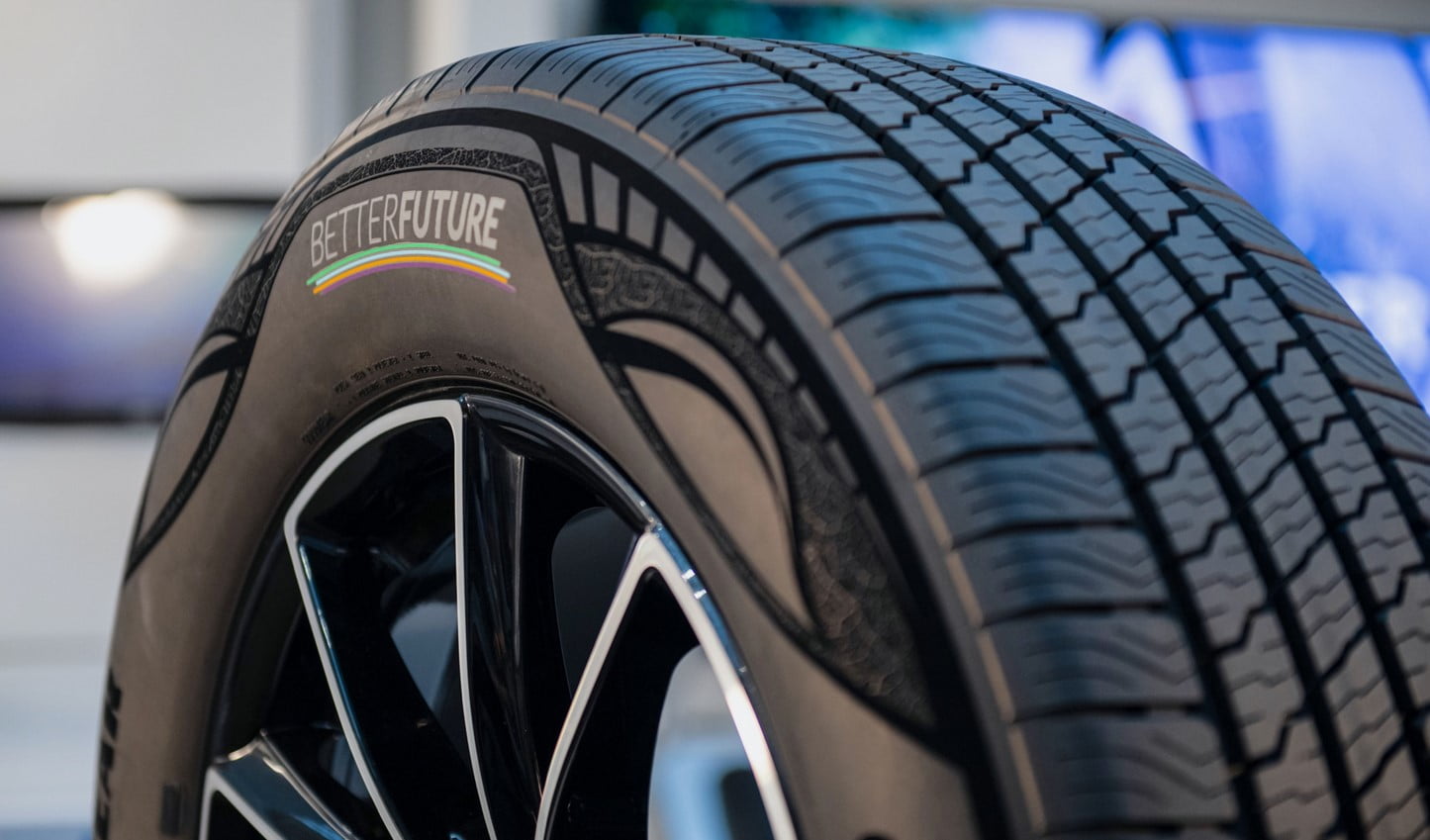
Goodyear has developed a tire made with 90% sustainable materials that can also save fuel, although it is not yet intended for production.
The “demonstration tire” passed all of Goodyear’s internal tests, as well as all applicable regulatory tests, and demonstrated lower rolling resistance than a comparable conventional tire, the company announced last week. Lower rolling resistance improves efficiency, making this tire a good choice for electric vehicles or models designed to maximize fuel efficiency.
Goodyear claims to have used 17 main ingredients, including 12 different tire components that are sustainably sourced or at least have a lower environmental impact than comparable materials currently used in tire production.
An example is carbon black, used to reinforce the rubber compound of tires and typically obtained by burning petroleum-derived products. For this demonstration tire, Goodyear used four different types of carbon black made from methane, carbon dioxide, vegetable oil, and raw materials from end-of-life tire pyrolysis, which the company says result in lower carbon emissions from the production process.
Goodyear also used soybean oil, made from surplus soybeans from food and animal feed, to keep the rubber compound malleable at different temperatures. This is something Goodyear is already using in some production tires. The company says that eight of its product lines, including some racing tires, include soybean oil.
Other highlights include silica made from rice husk waste, recycled polyester from bottles, renewable pine resins, polymers from biological raw materials, and recycled steel for cables. The steel is produced in an electric arc furnace, which requires less energy and allows for a higher level of recycled content than other processes, according to Goodyear.
The demonstration tire shows that Goodyear has the ability to manufacture a tire with 90% sustainable content, even as it aims to launch a production tire with 70% sustainable content this year. Goodyear introduced the 70% sustainable tire as a conceptual demonstration tire just a year ago, so it is moving quickly.
Like the cars they are attached to, tires are undergoing an efficiency overhaul. Driving this are automakers’ goals to reduce carbon impact and increase sustainable content. Hyundai and Michelin, for example, are partnering for such goals, while Bridgestone announced plans last year to make tires from natural rubber sourced from guayule in the southwestern United States.
Further out is the idea of a regenerating tire with liquid-filled capsules, which Goodyear dreamed up about three years ago. Perhaps more challenging to make commercially viable, it could have a positive impact in its own way by reducing waste.







